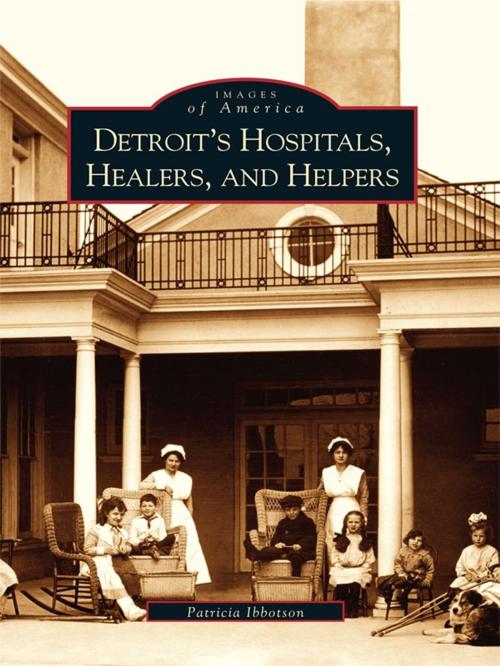Detroit's Hospitals, Healers, and Helpers
Nonfiction, Health & Well Being, Medical, Reference, History, Art & Architecture, Photography, Pictorials, Biography & Memoir| Author: | Patricia Ibbotson | ISBN: | 9781439614822 |
| Publisher: | Arcadia Publishing Inc. | Publication: | January 6, 2004 |
| Imprint: | Arcadia Publishing | Language: | English |
| Author: | Patricia Ibbotson |
| ISBN: | 9781439614822 |
| Publisher: | Arcadia Publishing Inc. |
| Publication: | January 6, 2004 |
| Imprint: | Arcadia Publishing |
| Language: | English |
The modern hospital evolved from both military garrisons and poorhouses. It wasn't until the mid-19th century that facilities with a wider purpose were founded in Detroit to combat diseases like cholera, tuberculosis, and mental illness. Religious institutions and benevolent societies established homes and treatment centers for the ill and abandoned, while public institutions were created for the very first time. This fascinating pictorial history of health care in the Detroit area features over 200 photographs and postcards of early hospitals, sanitariums, and orphanages, and the kindhearted people who staffed them. From St. Mary's, founded in 1845 and later known as Detroit Memorial Hospital, to Henry Ford Hospital, founded in 1915, this book documents the variety of institutions that sought to relieve or cure medical conditions. Most of these historic facilities no longer exist, and are known only by the photographs that preserve them. The images provide a rare glimpse of what health care was like at the turn of the century.
The modern hospital evolved from both military garrisons and poorhouses. It wasn't until the mid-19th century that facilities with a wider purpose were founded in Detroit to combat diseases like cholera, tuberculosis, and mental illness. Religious institutions and benevolent societies established homes and treatment centers for the ill and abandoned, while public institutions were created for the very first time. This fascinating pictorial history of health care in the Detroit area features over 200 photographs and postcards of early hospitals, sanitariums, and orphanages, and the kindhearted people who staffed them. From St. Mary's, founded in 1845 and later known as Detroit Memorial Hospital, to Henry Ford Hospital, founded in 1915, this book documents the variety of institutions that sought to relieve or cure medical conditions. Most of these historic facilities no longer exist, and are known only by the photographs that preserve them. The images provide a rare glimpse of what health care was like at the turn of the century.















